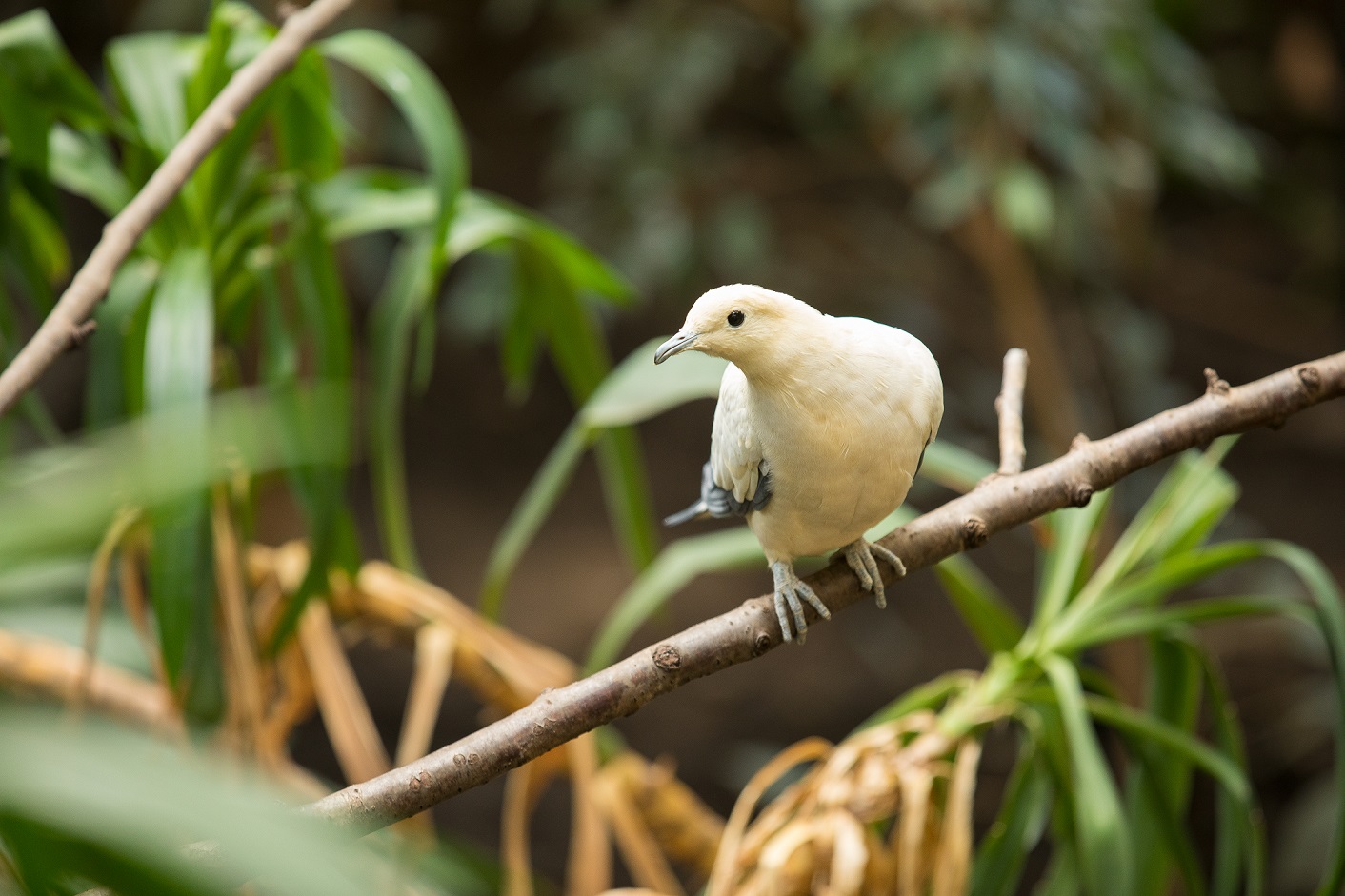Pied imperial pigeon
Ducula bicolor

Pied imperial pigeons are a relatively large, pied species of pigeon found in forests in Southeast Asia ranging from Myanmar, Thailand, Indonesia, the Philippines and the Bird's Head Peninsula in New Guinea. The species is mainly found on small islands and in coastal regions.
Pied imperial pigeons live on nutmeg and other large nuts and fruits that are larger than their heads. Their jaws have elastic sockets like a boa constrictor’s that stretch to accommodate large objects.
We are home to five pied imperial pigeons - Zoe, Valentine, Nutmeg, Spice and Timor - who can all be spotted in the aviaries near our upper rhino habitat.
Population
Decreasing
Diet
Herbivore
Habitat
Coastal
Fact file
They can be recognised by their bicolouration - all the plumage is white except for the tips of the wings and tail, which are black
These pigeons are among the most powerful and agile flyers in the bird world and their flight muscles are relatively larger than in most bird groups. This allows them to cross large bodies of water to different islands

How we're helping
Like all the animals in our care, Zoe, Valentine, Timor, Nutmeg and Spice are amazing ambassadors for their relatives in the wild and help hundreds of thousands of people connect with nature every year. They encourage visitors to learn about the threats facing wildlife and the action they can take to help create a world where nature is protected, valued and loved.
As a wildlife conservation charity, we care for the animals here at the zoo and work to protect species at risk around the world. From providing expertise in genetics and veterinary health, to protecting wild places with local conservation partners, and even restoring threatened species to the wild, we are active where we are needed most.
Find out more about RZSS conservation
